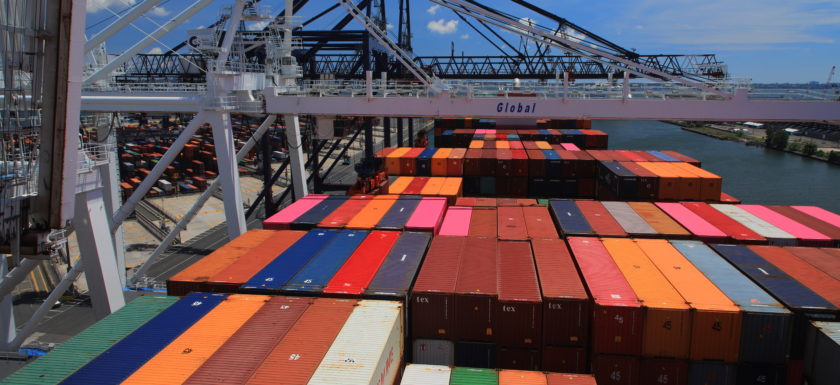Last year was a record-breaking one at the Port of New York and New Jersey. For the first time in its history, which dates back to when the first container ship sailed across New York Harbor in 1956, the Port broke the 7 million TEU (20-foot equivalent units) mark. The record-setting amount of cargo (7,179,788 TEUs) exceeded the previous year’s quantity by almost 7 percent. The boost was fueled by an 8.2 percent increase in imported goods, including clothing, furniture, electronics, and other products, over the previous record for imports set in 2017. The ensuing growth also resulted in the port handling one-third of all containers on the East Coast in 2018, a 2.8 percent increase in market share from last year.
Size and Volume of Cargo Ships Increases With the Rise of the Bayonne Bridge
The June 2017 completion of the Bayonne Bridge Navigational Clearance Project, which raised the clearance under the bridge from 151 feet to 215 feet, also played a role in giving last year’s cargo numbers a lift. The additional clearance allows the nation’s largest ships to now pass under the bridge to access port terminals in New York and New Jersey. Since the bridge project was completed, an increasing number of larger ships are calling on our port. Today, nearly 30 percent of the port’s containerized cargo is carried on vessels with the capacity to handle 9,000 or more TEUs–the size that could not transit under the old Bayonne Bridge.
ExpressRail Moves A Record Amount of Rail Cargo
In addition to a record-setting increase in cargo containers, the Port also set a new record for rail cargo. The Port Authority’s ExpressRail system moved 645,760 containers, up 13.8 percent over 2017. The record-breaking duo of container and rail cargo further solidifies the Port of New York and New Jersey’s position as a dominant port—the busiest on the East Coast and the third busiest in the nation, following Los Angeles and Long Beach.
Helping accommodate the Port’s pattern of growth is the recent partial opening of the $149 million ExpressRail Port Jersey facility, the concluding piece of the Port Authority’s $600 million capital investment program dating back to the 1990s. The new facility, which is expected to be fully operational early in 2018, fulfills the agency’s strategic five-year goal to handle more than 900,000 rail lifts in 2023, the equivalent of more than 1.5 million fewer truck trips traveling through the local roads. When ExpressRail Port Jersey is complete, the rail facilities will collectively have the capacity to handle up to 1.5 million containers a year.
Autos, Cruise Ship Passenger Volume, and Bulk Cargo Also Showed Growth
The port also experienced strong volumes in its auto line of business. Although total volume was down 0.7 percent when compared to 2017, more than 573,000 finished vehicles moved over port facilities in 2018. The auto line of business also contributed to more than 500 vessel calls in last year.
More than 856,000 travelers climbed aboard passenger ships at Brooklyn and the Cape Liberty Cruise Terminal in Bayonne, a rise of more than 17 percent over the previous year.
Port commodities such as road salt, scrap metal, and edible oils also saw strong growth. A total of 3.68 million metric tons were handled in 2018, representing a more than 16 percent increase as compared to 2017.
For more information on our record year, check out the official Port Authority press release.

